While hiking I sometimes come across stray dogs and often wondered was there a way to tell if the dog was dangerous. So I asked myself what contributes to a dog becoming dangerous? People often refer to a particular breed as being dangerous, however, I have discovered through research that this is not a fair assumption and there are other factors that contribute to a dangerous dog.
To determine a dangerous dog is a dog that has been neglected and mistreated. Such dogs are often chained or caged with little contact with people, never socialized with other people or other animals, and possibly even taught to attack without proper professional training.
- Mistreated or neglected dogs can be dangerous
- Chained dogs can be dangerous
- A dog taught to attack by amateurs can be a dangerous dog
- A dog never walked can be a dangerous dog
- A dog that has little contact with people can be dangerous
- A dog that has not been socialized with animals can be dangerous
- A dog breed that has become a stereotypical representation of a ”dangerous dog” could possibly be a dangerous dog.
The most dangerous dog is one that has been neglected most of its life, chained up with little to no contact with people. Lack of socialization from an early age with animals and people. Media representation of the breed also plays a part in attracting people who want a status breed to intimidate others who often don’t look after the dog’s needs.
Mistreated or neglected dogs can be dangerous
Dogs that have been mistreated, abused, or neglected can pose a serious risk to people and other animals. These dogs often try and escape their terrible living conditions.
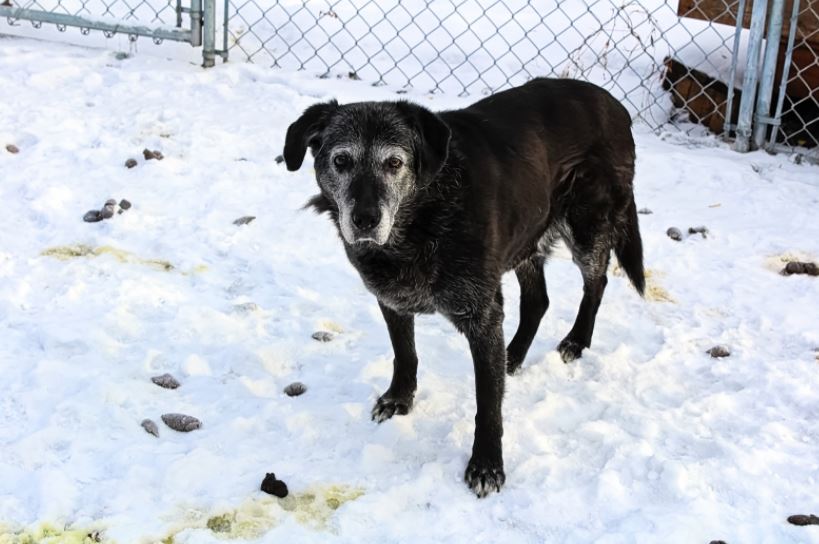
Signs of Neglect include:
- Malnutrition
- No shelter from the weather conditions
- Not fed the proper diet.
Sings of Abuse include:
- Evidence of person hitting, kicking, and physically harming a dog
- Burns
- Dog Fighting – torn ears and lips, facial scars
- Allowing the dog to kill other animals.
- Dog chained
- signs of wounds and injuries
- Evidence of flea, tick or mange,
- Matted fur, Overgrown nails, fur covering eyes
- Dogs forced into a very small cage
- Poor sanitation of dogs living conditions
- The dog’s collar is too small and embedded in the skin of the neck
- Dogs used continually in puppy mills
Such dogs need to be approached with caution and are advised to put on a muzzle with lots of positive reinforcement to help these dogs out of their bad situation. Such dogs may not have social skills with people, children or other animals. These dogs need complete veterinary care and rehabilitation to install their trust in humans.
Chained dogs can be dangerous
Dog Chaining is the practice of chaining up a dog for the majority of the time. In some cases, dogs have been chains for months and even years at a time. Dog chaining is a form of animal abuse and is even illegal in many states around the world.
Dogs that are chained have severe psychological problems due to a lack of the dog being about to explore the world around them. Such negative behaviors can result in neurotic, unhappy, anxious, and aggressive
They can be the subject of taunts and abuse as they can’t find back from passers-by. They develop bad behavior as their lack of socialization is limited and their pent-up energy only frustrates them further.
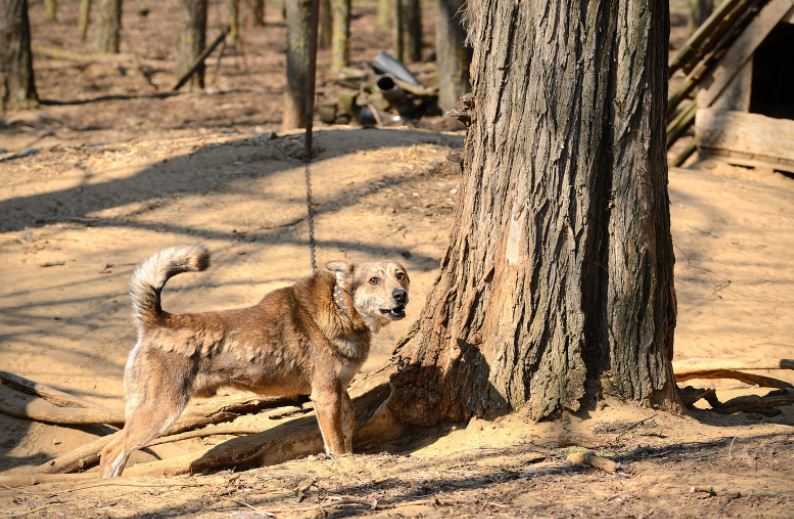
Associated risks to the dog, can be strangled by the chain, tipping over the water bowls by dragging chains, susceptible to extreme weather events, neck injuries, defecated in the same area they sleep in and can bark continuously from boredom.
Such chained dogs are mostly from owners who don’t have the time to look after the dog properly. In terms of giving the dog walks, socializing, and training the dog. Or the dog is chained because there isn’t sufficient fencing for the dog. In either case, one should not have a dog if one cannot properly house the dog or if you don’t have time to look after it properly.
A dog that is changed most of its life and then running loose can potentially be a very dangerous situation. The good news is that with proper training, socializing, and exercise, such dogs can be rehabilitated and find a new home.
If you come across a stray dog look for signs that if it was chained. These include matted or lack of fur around the dog’s neck, worn or calloused areas on the sides of the dog’s legs indicating the dog laying on hard ground for long periods.
A dog taught to attack by amateurs is a dangerous dog
Teaching a dog solely to attack without the correct training is irresponsible. When a dog learns protection training it learns to listen to its master, the fundamentals of obedience training, to control its prey drive, and to let go on command.
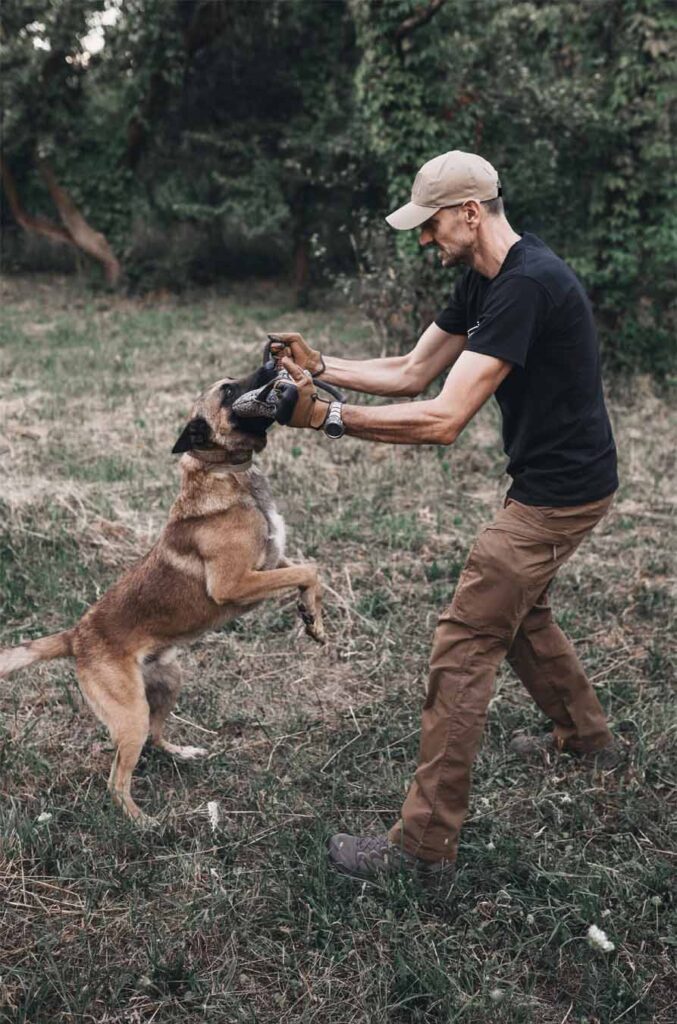
If a dog is solely taught to attack by someone without learning these other commands then the dog is certainly dangerous even with its owner around.
A dog that is never walked can be dangerous
A dog that is continually housed in the same yard and never allowed to go outside its boundaries will have anti-social, psychological problems, and a huge amount of pent-up energy. These dogs typically bark all day, are very destructive, and like to test their owners as the alpha male. Once these dogs do get out they can attack other dogs and people.
In the right hands, this bad behavior can be redirected once the dog is exercised, practices social situations with other people and animals, and can become a good dog.
A dog that has no contact with people can be dangerous
Dogs that have little contact with people are potentially dangerous when meeting new people. Many farm dogs that live with the flock are typical of this and do not socialize well with people and are very standoffish. These dogs will typically bark aggressively if people are approaching.
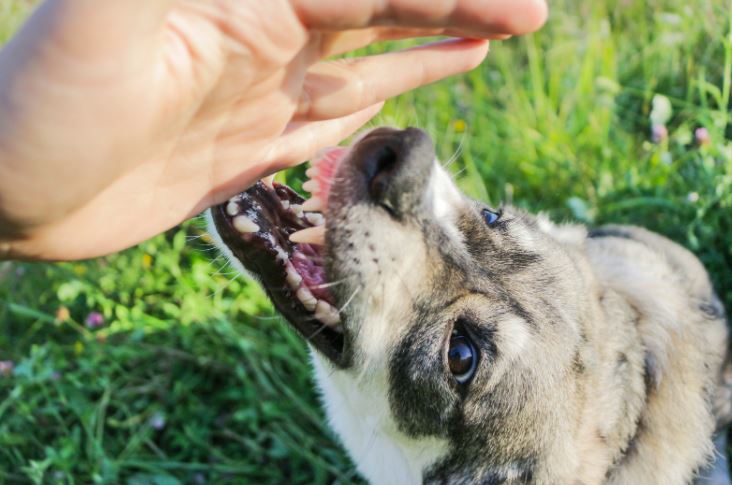
Socialize your dog from a young age with as many different types of people, such as children, the elderly, short and tall people and people of different nationalities. Do this especially if you have a dog from a breed that is known to be standoffish with strangers, has a high prey drive.
A dog that has not been socialized with animals can be dangerous
Socializing dogs at a young age is so much easier than socializing a dog that has never been socialized. This is because when the dog is a puppy it hasn’t learned bad behaviors and approaches new scenarios with an open mind. The puppy might have to be encouraged to engage with the socialization and care needs to be taken to approach new people, animals, and surroundings.
Socializing an adult dog that has never been socialized is hard work especially if the dog is disobedient, has fear issues, and is a big powerful breed. Large Adult dogs with this problem may also need professionals to help the dog learn positive social behaviors.
A Lot of the time when a dog’s behavior in a threatening way while with its handler, it could be that the handler is not demonstrating a leadership role. This puts the dog into the ‘leadership / protective’ mode which causes the dog to act defensively towards anyone or animal that comes near you.
A dog breed that has become a stereotypical representation of a ”dangerous dog” could possibly be a dangerous dog.
When most people think of a dangerous dog, they are thinking more about a specific breed of dog. This is because a breed develops a bad reputation through a cycle of media sensationalism over time. The media sensationalism creates an ongoing stereotypical idea that a certain breed is considered dangerous which develops in the collective minds of society.
A bad reputation of a dog breed further grows when certain people are looking for an intimidating dog that people will fear. Such people are less than ideal to look after a dog and it is often left neglected, or worse abused. Eventually the neglected dog bites or attacks someone which the media reports the story in a sensationalist way, thus completing the cycle and then reinforcing the reputation.
- Breed receives negative media attention
- Negative attention attracts people who buy that certain breed to intimidate others
- Such people neglect these dogs and often teach them bad behaviors
- The dog eventually escapes, bites or attacks someone
- The media covers the story of the attack in a sensationalistic way, completing the cycle.
- The dog breed is overrepresented in popular media such as film and television to tell a story.
Many breeds have been subject to this stereotypical representation over time. In the last 30 years, it has been Rottweilers and Pitbull Terriers. Unfortunately, these breeds are still being used by people who misuse, neglect, and abuse these dogs.
If you come across a stray of such a breed, treat it with caution. As they may have been subject to abuse and not socialized well with people or other dogs. Nine times out of ten you will be coming across a beloved family pet who is just lost and otherwise well looked after and trained.
If you would like to know more of the history of how a breed becomes feared in society please read
The Most ”Dangerous” Dog Breed
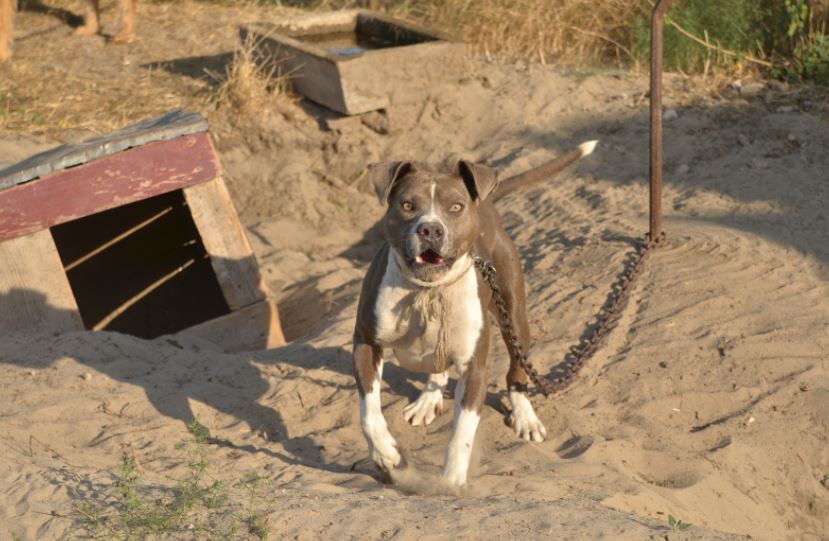
The most dangerous dog is a dog that has been neglected, abused, or has had a lack of social interactions from being caged or chained resulting in a lack of positive experiences with people or other animals.
A dog that is taught bad behaviors such as attacking animals or people for the sake of intimidation or entertainment is dangerous. Unfortunately, certain breeds that are known in the collective minds of society as being dangerous such as Pitbulls, are the ‘breeds of choice’ at the moment, for many people who wish to instill fear in others. These people misuse and mistreat these dogs and as a result, they can become dangerous.
The good news is that dogs are resilient and can bounce back from adversity. With the professional veterinary care and dog rehabilitation, many dogs can become great companions.
